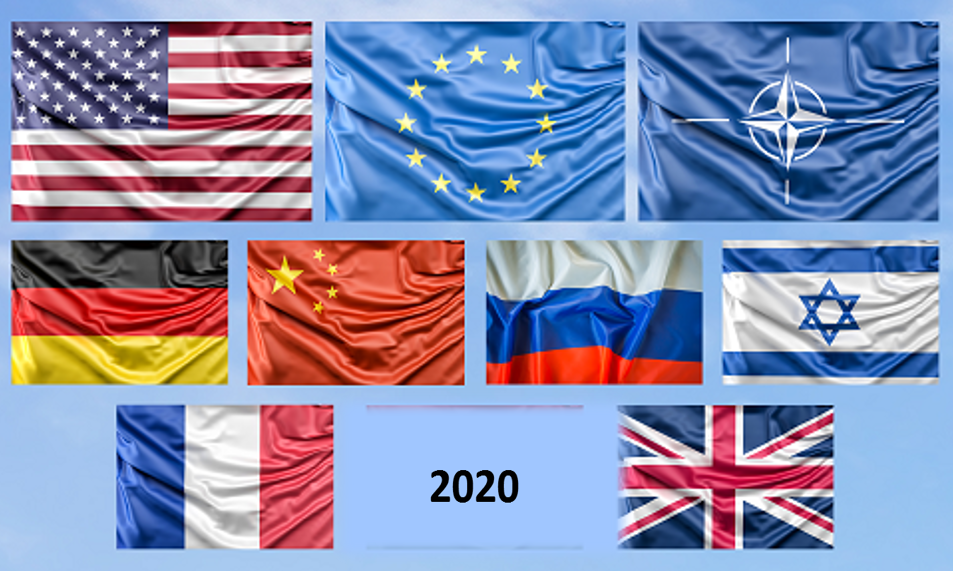Summary
- With the exception of NATO, for all state and institutional actors taken into account by the analysis, the number and the impact of the mentions decrease, both on social networks and in online media.
- In the case of NATO, we witness both an increase of the mentions and an increase in their impact.
- With the exception of Israel, for all state and institutional actors
taken into account by the analysis, there are more mentions and a higher
impact in the online media, as compared to the social networks.
- In the case of Israel, the number of mentions on social networks is higher, as a result of the relative weight of Twitter. The global impact of mentions in online media is higher for Israel too.
- All the actors included in the analysis register peaks of mentions regarding
the coronavirus. The health crisis significantly influences the visibility
of state actors or international institutions in the Romanian online media environment.
- This is also a consequence of the fact that the recurrent debates on the coronavirus, in the Romanian online media and on social networks, make references to the situation in other countries (the evolution of official figures), travel restrictions or the situation of Romanians still abroad and affected by the epidemics.
- The importance of other issues has started to increase, such as the US protests, the disagreements within NATO, the EU economic recovery plans or the post-Brexit relations between the EU and the UK.
- The United States, the European Union, and Germany remain the actors with the highest visibility. Moreover, unlike May, when the mentions concerning the UK had a high impact, the mentions concerning these three actors are the most viewed. As in May, at the end of the ranking lie the Russian Federation, NATO, and Israel.
- In comparison to the previous months, we notice a decrease in mentions and a lower impact in mentions concerning China. The country lies in the second part of the rankings, after being one of the actors attracting the most attention during spring.
The full study (in Romanian) is available here
